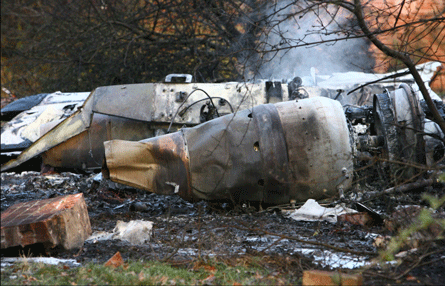The pilots of a Cessna Citation 500 that crashed fatally near Biggin Hill in the UK in 2008 soon after take-off had been misled by unidentified vibration and believed their aircraft was suffering engine failure.
Investigators found that the engines had not failed, but they both stopped delivering power during the crew's attempt to return for landing, and an attempted engine restart was initiated too late.
These are the findings of the UK Air Accidents Investigation Branch's probe into a 30 March 2008 accident that killed the two pilots and three passengers when the Citation hit a house in a residential area near the airport.
The aircraft was not equipped - nor required to be - with a cockpit voice or flight data recorder, restricting what the investigators could learn about the crash causes. One of the recommendations is that turbine-powered aircraft manufactured since 1990 should be required to have recorders.
 |
|---|
The elapsed time between take-off and impact was less than 5min. Two minutes after take-off the pilots radioed that they were making "an immediate return" to the airport, and within seconds revealed their belief that the problem was engine vibration.
The investigators, by a process of elimination, decided the vibration probably originated from the failing bearings of the air cycle machine, a component of the air conditioning and pressurisation system.
Subsequently, 70s before impact with the surface, the investigators know that neither engine was delivering power. At impact, both were powering up at different stages in the restart process.
The cause of the cessation of power in the starboard engine has not definitely been determined, but engine failure is ruled out, while deliberate shutdown is not eliminated.
The port engine power cessation, according to the investigation, may have been a case of unintentional shutdown as a result of snagging between two levers caused by a simple mechanical failure. The levers, the left engine throttle lever and its fuel shut-off lever, are immediately next to each other.
The AAIB has determined that a failed rivet head that connected the two may have caused the retarding of the throttle lever to shut off the fuel supply to the engine, leaving the aircraft with no power.
That is the probable cause of this accident, says the report. But the AAIB does not know it for certain, hence the call for recorders to be compulsory in small turbine-engined aircraft.
- LEARMOUNT: The crash we'll never understand
Source: Flight International
















